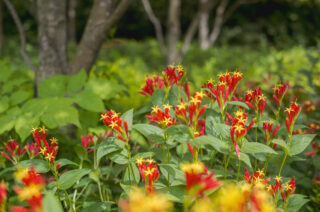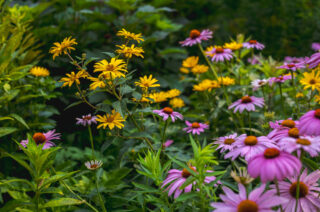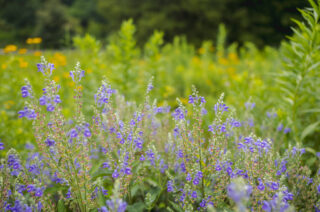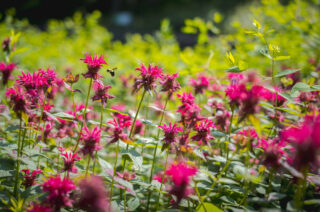Gardening with Native Plants
This Earth Month‚ you can help the planet by doing something you love most: gardening!

Creating a garden with native plants is one of the easiest ways to help preserve biodiversity. Not only that, it’s also an incredibly uplifting approach to incorporate more sustainable habits into your life. By using native species, your garden will become a thriving habitat, a haven within a landscape fragmented by urban and suburban development.

Native plants are “native” because they’re naturally found in your region. They’re already adapted to the local climate, soil conditions, and water levels in the area, meaning they’re not only resilient, but will also work alongside the natural ecological systems in harmony. And you’re part of that harmony! Your days of high maintenance gardens are over: native plants in the right location typically require require less fertilizer and water than lawns and create a balanced environment where birds and beneficial insects will reduce pest problems.
Native plants can be just as beautiful as any other non-native, ornamental plant. By bringing a variety of plants into your garden, you’ll not only create a multi-layered, diverse, and spectacular tapestry, but you’ll also attract wildlife and beneficial pollinators. Many native species like birds and butterflies co-evolved with the native flora of their region, creating a dependency. Because of their symbiotic relationships, native fauna will seek out native plants for food and shelter. You can bring beauty to your garden while reducing pest problems!

Human-driven changes in the natural environment, such as the introduction of invasive species, deforestation, habitat loss, climate change, and other issues have been stressors for the native plant population, disrupting entire ecosystems and the communities within them. Many of the ornamental landscaping plants we see in nurseries are not native—though beautiful and often not particularly harmful, they don’t have the same benefits for your garden that native plants do. As climate resiliency becomes increasingly important, there is a movement toward nature-based solutions, not only for biodiversity conservation, but also to mitigate the impacts of natural disasters like floods. Native plants can support both.

Here are a few tips for planning your native plant garden from our Plant Doctors in the Mertz Library. Growing native plants is easy and uses the same basic rules of any garden design! Have any other questions as you get started on your gardening journey? Ask the Plant Docs here.
- Decide what kind of habitat or growing conditions you have, then select appropriate plants.
- Plant in large drifts for larger impact.
- Pay attention to foliage when combining native plants; they offer a vast array of textures and forms to experiment with in your garden.
- Use ground covers broken up by plants that add heights to create a green tapestry across a woodland area; it is much more successful and exciting than a shady lawn and a great way to suppress weeds.
- Experiment with floral forms. In a sunny garden, try combining ray flowers (daisy-like shapes) with spires and translucent, wispy grasses.
- Fertilize plantings in early spring with an organic fertilizer or compost.
- Mulch beds with any type of organic material, such as shredded leaves and fine, pine bark chips.
If you live in the Northeast, here are some native plants to add to your garden. Choose plants that suit your home landscape—shade or sun, damp or dry.
- Virginia bluebells (Mertensia virginica)
- Yellow celandine poppies (Stylophorum diphyllum)
- Showy trilliums (Trillium grandiflorum)
- Golden star (Chrysogonum virginianum)
- Wood phlox (Phlox divaricata)
- American wild ginger (Asarum canadense)
- Foamflowers (Tiarella cordifolia)
- Solomon’s seal (Polygonatum spp.)
- Mayapple (Podophyllum peltatum)
- Twinleaf (Jeffersonia diphylla)
- Bearberry (Arctostaphylos uva-ursi)
- Blazing star (Liatris)
- Goldenrods (Solidago)
Want to learn even more? Check out our episode of Plant People, NYBG’s podcast, with guest Doug Tallamy.
SUBSCRIBE
Enter your email address to subscribe to this blog and receive updates on new posts.











